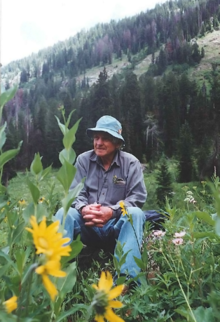Garniss Curtis

Garniss H. Curtis, (born May 27, 1919 – died December 19, 2012) was a professor of geology at the University of California, Berkeley, geochronologist, volcanologist, geophysicist, and founder of the Berkeley Geochronology Center. In 1960, Curtis and fellow UC Berkeley geophysicist used potassium-argon dating methods developed by UC Berkeley physicist John Reynolds on minerals found in tephra deposits collected by Evernden to date Mary Leakey's 1959 Olduvai Gorge Bed I hominin Zinjanthropus (Paranthropus boisei) to 1.89 to 1.57 Mya.[1] The great age of the fossil hominid and associated stone tools in the bed pushed back the then accepted age of the Pleistocene another million years, causing a stir in the geology community.[1][2] The dating of these fossil finds is considered a starting point for the collaboration of paleoanthropology and geochronology.
Garniss Curtis died December 19, 2012, in Orinda, California.[3]
References[]
- ^ Jump up to: a b Taylor, R. E.; Aitken, M. J., eds. (1997). Chronometric Dating in Archaeology, Vol. 2. Springer-Verlag New York. p. 110. ISBN 978-0-306-45715-9.
- ^ Leakey, Mary (1979). Olduvai Gorge. London: Book Club Associates. p. 42.
- ^ Robert Sanders. "Garniss Curtis, pioneer of precision fossil dating, has died at 93". UC Berkeley News Center. Retrieved 27 February 2013.
Further reading[]
- Connecting the Links: Louis Leakey, Olduvai Gorge, and Garniss Curtis, at the National Center for Science Education blogsite.
- 1919 births
- 2012 deaths
- American geologists
- American geophysicists
- University of California, Berkeley faculty
- American geologist stubs
